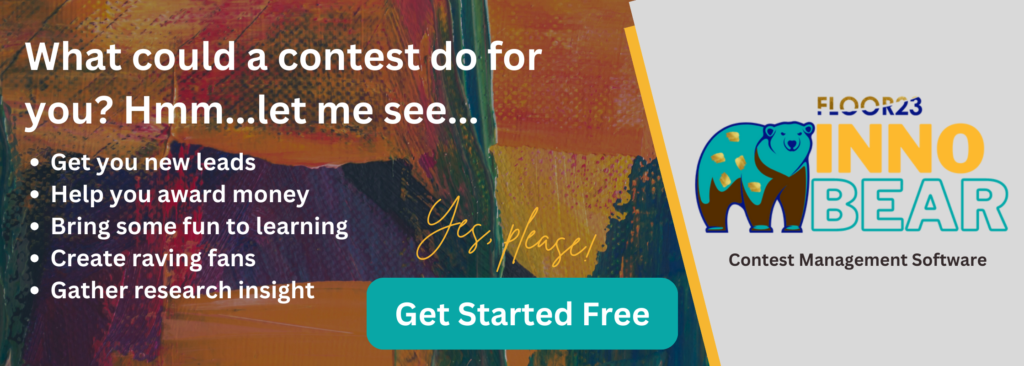Getting more customers is always the goal, right? But sometimes, figuring out how to get them can feel like a puzzle. You hear about all these different ways to find people interested in what you offer, and it can be a lot to take in. This article is about making sense of it all, looking at some tried-and-true methods for finding new business in 2025. We’ll cover how to get people interested in the first place, keep them engaged, and finally turn that interest into actual sales. It’s not about doing everything, but doing the right things well.
Key Takeaways
- Focus on understanding who your ideal customer is before you start any outreach.
- Create content that genuinely helps people; this builds trust and attracts interest naturally.
- Use digital tools like LinkedIn and targeted ads to reach the right people without wasting effort.
- Keep potential customers engaged with a series of emails and helpful information over time.
- Make sure the process from first contact to becoming a customer is smooth and easy for them.
Mastering the Art of Lead Generation

Getting started with lead generation strategies in 2025 means understanding what it is and why it matters. It’s not just about collecting names; it’s about finding people who might actually buy what you’re selling and then getting them interested enough to talk to you. Think of it as the first step in building a relationship with a potential customer. Without a plan for this, your sales team might end up talking to a lot of people who will never buy anything, which is a waste of everyone’s time.
Understanding the Fundamentals of Lead Generation
At its heart, lead generation is the process of attracting people who show interest in your company’s products or services. These interested individuals are called ‘leads.’ The goal is to turn strangers into prospects. It’s important to know that not all leads are the same. Some might just be curious, while others are actively looking for a solution you provide. Knowing who your ideal customer is helps you focus your efforts on the right people.
Defining Your Ideal Customer Profile
Before you start trying to get leads, you need to know who you’re trying to reach. This is your Ideal Customer Profile (ICP). It’s a detailed description of the kind of person or company that would get the most value from your product or service and is therefore most likely to become a paying customer. Think about things like:
- Demographics: Age, location, job title, income level.
- Firmographics (for B2B): Industry, company size, revenue, location.
- Pain Points: What problems are they trying to solve?
- Goals: What are they trying to achieve?
- Where they spend time: Which websites, social media platforms, or publications do they follow?
Having a clear ICP helps you create marketing messages that speak directly to their needs and find them where they are.
The Importance of a Robust Lead Generation Strategy
Why bother with a solid lead generation strategy? Well, it does a few key things for your business. First, it gives you a better idea of who your customers are. By interacting with potential leads, you learn what they care about, what problems they have, and what they’re looking for. This information helps you make your marketing more effective.
A good strategy also makes your brand look more reliable and knowledgeable. When you consistently provide helpful information, people start to see you as an expert in your field. This builds trust, which is a big deal when someone is deciding whether to buy from you.
Finally, and most importantly, a strong lead generation strategy directly impacts your company’s income. The more good leads you get, the more chances you have to turn those leads into customers who pay. It’s about building a steady flow of potential business, not just hoping people will find you.
Leveraging Content for Inbound Success
Creating content that genuinely helps people is the bedrock of inbound marketing. It’s about being useful and informative, not just pushing a product. When you consistently put out helpful material, people start to see you as someone who knows their stuff. This builds trust, and trust is what gets people to pay attention when you eventually do have something to offer.
Creating Valuable, Educational Content
Think about what problems your potential customers are trying to solve. Your content should aim to answer those questions or offer solutions. This could be anything from blog posts explaining a complex topic to short videos demonstrating a process. The key is to be clear and direct. For instance, if you sell project management software, a blog post titled “5 Common Project Delays and How to Avoid Them” is much more likely to attract the right audience than something overly promotional. It’s about providing real value upfront. This approach helps attract people who are actively looking for solutions in your area.
Utilizing Gated Content for Lead Capture
Once you’ve created some great content, you can use it to collect contact information. This is often called
Precision Targeting with Digital Channels
Optimizing LinkedIn for B2B Lead Generation
LinkedIn is more than just a place to post your resume; it’s a goldmine for B2B leads if you know how to work it. Think of it as a digital networking event where you can connect directly with the people who matter. Focus on building genuine connections, not just sending generic connection requests. Share insights, comment on industry posts, and engage with content from your target audience. Using LinkedIn Sales Navigator can really help here, giving you access to better search filters and direct contact information for key decision-makers. It’s about being visible and helpful in the right circles.
Implementing Targeted PPC Advertising
When someone is actively searching for a solution like yours, you want to be there. That’s where Pay-Per-Click (PPC) advertising comes in. Platforms like Google Ads and LinkedIn Ads let you bid on specific keywords so your ads show up when people are looking for what you offer. It’s a direct way to capture demand.
Here’s a quick breakdown of how to make PPC work:
- Keyword Research: Find terms your ideal customers use when searching for solutions.
- Ad Copy: Write clear, compelling ads that speak directly to the searcher’s intent.
- Landing Pages: Send ad clicks to dedicated pages that match the ad’s message and have a clear call to action.
- Negative Keywords: Block your ads from showing for irrelevant searches to save money.
Retargeting Engaged Prospects Effectively
Not everyone who visits your site is ready to buy right away. Retargeting is about bringing back those interested visitors who didn’t convert the first time. You can show them specific ads across different platforms, reminding them of your brand and what you offer. It’s like a gentle nudge to bring them back to the conversation.
Retargeting works best when the ads are relevant to what the person looked at on your site. If someone viewed a specific product page, show them an ad for that product, maybe with a special offer. This makes the ad feel less intrusive and more helpful.
Nurturing Leads Through Strategic Communication
Once you’ve got a lead, the real work of building a relationship begins. It’s not enough to just collect contact information; you need to guide those potential customers through their decision-making process. This is where strategic communication comes into play, turning interested parties into loyal clients.
Crafting Tailored Email Sequences
Email is still a powerhouse for B2B lead nurturing. The trick is to move beyond generic blasts and create sequences that feel personal and relevant. Think about segmenting your audience based on how they first engaged with you – did they download a guide, attend a webinar, or visit a specific product page? Then, build out a series of emails that address their likely questions and interests at each stage. Start with a welcome email that sets expectations, follow up with content that educates them about their problem and your solution, and eventually, introduce a clear call to action. The goal is to provide value at every touchpoint.
Automating Lead Nurturing Processes
Manually managing these sequences for every lead would be impossible. That’s where automation tools shine. You can set up workflows that trigger emails based on specific actions a lead takes (or doesn’t take). For instance, if someone clicks a link in one email but doesn’t convert, you can automatically send them a follow-up with more information or a different offer. This keeps your brand visible and your message consistent without requiring constant manual intervention. It’s about working smarter, not harder, to keep leads engaged. You can find tools that help with this on sites like HubSpot.
Engaging Prospects with AI Chatbots
Chatbots have come a long way. They’re no longer just for answering basic FAQs. Modern AI chatbots can qualify leads by asking targeted questions, gather contact details, and even schedule appointments, all while your team is busy elsewhere. They offer immediate responses, which is great for prospects who want answers fast, day or night. When implemented thoughtfully, they can significantly improve the lead qualification process and free up your sales team to focus on closing deals rather than initial screening. It’s a way to provide instant engagement and gather important data.
Building a Seamless Lead Generation Funnel
Think of your lead generation funnel as the path a potential customer takes, from first hearing about your business to actually making a purchase. It’s not just about getting names; it’s about guiding people who are interested toward becoming loyal customers. A well-built funnel makes this journey smooth and logical, helping you convert more prospects without them feeling pushed.
Optimizing Top, Middle, and Bottom of Funnel Stages
Every stage of the funnel has a different goal. At the top (TOFU), you want to grab attention and offer something useful, like a blog post or a quick guide. This is about introducing your brand and showing you have answers to common problems. Then, in the middle (MOFU), you need to build on that initial interest. This is where case studies, comparison charts, or webinars come in handy, helping prospects evaluate their options and see why your solution fits. Finally, the bottom (BOFU) is about closing the deal. Think product demos, free trials, or special offers that encourage a decision. Making sure each stage flows into the next is key.
Ensuring Frictionless Landing Page Experiences
Your landing pages are critical conversion points. If a visitor clicks through from an ad or a social post, they need to find exactly what they expected, and it should be easy to take the next step. This means clear headlines, concise copy, and a simple form. A confusing or slow landing page can lose you a lead before you even get a chance to talk to them. Keep forms short, only asking for necessary information. The easier it is for someone to convert, the more likely they are to do it.
Converting Interest into Actionable Opportunities
Getting someone to fill out a form is just the start. The real win is turning that interest into a real business opportunity. This involves understanding what makes a lead
Integrating Strategies for Sustainable Growth

Combining Account-Based Marketing with Social Selling
Account-Based Marketing (ABM) and social selling aren’t just buzzwords; they’re powerful partners for B2B growth. ABM helps you pinpoint the exact companies and people you want to reach. Then, social selling, especially on platforms like LinkedIn, lets you build relationships and engage with those specific individuals. Think of it as a highly targeted approach. You identify your dream clients, then use social media to connect with key people within those companies, share relevant insights, and start conversations. This makes your outreach feel less like a cold call and more like a helpful introduction.
Synergizing SEO, Content, and Webinars
When your audience is actively searching for solutions, this combination is gold. Search Engine Optimization (SEO) makes sure your valuable content shows up when potential clients are looking. Your content, whether it’s blog posts, guides, or case studies, educates and builds trust. Webinars then take this engagement a step further, allowing for direct interaction and qualification of interested prospects. It’s a way to attract people who are already in the market for what you offer and guide them toward becoming leads.
Measuring and Refining Your Lead Generation Engine
Building a strong lead generation system isn’t a set-it-and-forget-it deal. It requires constant attention and adjustment. You need to track what’s working and what’s not. Key metrics like cost per lead (CPL), conversion rates at each stage of the funnel, and the overall return on investment (ROI) for different channels are important.
Here’s a look at some metrics to keep an eye on:
- Website Traffic: How many people are visiting your site?
- Lead Conversion Rate: What percentage of visitors become leads?
- Cost Per Lead (CPL): How much does it cost to acquire one lead?
- Customer Acquisition Cost (CAC): How much does it cost to get a new customer?
- Sales Qualified Leads (SQLs): How many leads are ready for the sales team?
Regularly reviewing these numbers helps you understand where to put your resources. If one channel isn’t performing, don’t be afraid to tweak it or shift focus. The market changes, and your strategies should too. The goal is to create a predictable, scalable process that consistently brings in good leads and supports long-term business growth.
To achieve lasting success, it’s important to combine different approaches. Think about how you can blend various methods to help your business grow steadily over time. Want to learn more about how to make your company thrive? Visit our website today!
Putting It All Together for 2025

We’ve explored various methods to attract new customers in 2025. It’s not just about grabbing any name; it’s about finding the right people and then actually talking to them. Utilizing tools like email, chatbots, and ensuring your website is user-friendly upon arrival are all key components of this. Remember, it’s a process. You need to keep testing what works, see what your audience likes, and adjust as you go. Building trust and giving people what they need is key. If you do this right, you can stop chasing leads and start seeing steady growth for your business.
Frequently Asked Questions
What exactly is lead generation?
Think of lead generation as finding people who might be interested in what you sell. You attract them with helpful stuff like blog posts or free guides, and then you ask for their contact info so you can talk to them more. It’s like fishing, but with more planning!
Why do I need a lead generation plan?
It’s super important because it helps you find new customers. Without it, your business might not grow. A good plan helps you find the right people who are likely to buy from you, which means you don’t waste time on people who aren’t interested.
How do I figure out who my ideal customer is?
You should know who your best customers are. What do they like? What problems do they have? Where do they hang out online? Knowing this helps you create content and ads that they’ll pay attention to.
How can I get people to give me their contact information?
You can use things like blog posts, free ebooks, or webinars that people can download or sign up for. When they want this cool stuff, they give you their email or phone number, which makes them a lead!
What does ‘nurturing leads’ mean?
Once you have someone’s contact info, you need to keep talking to them. Sending them helpful emails or messages over time helps them trust you more and makes them more likely to buy. It’s like building a friendship before asking for a sale.
What are some good ways to find leads online?
You can use social media like LinkedIn, run ads on Google, or send out email campaigns. It’s best to pick a few that work well for your specific business and focus on doing those well.




